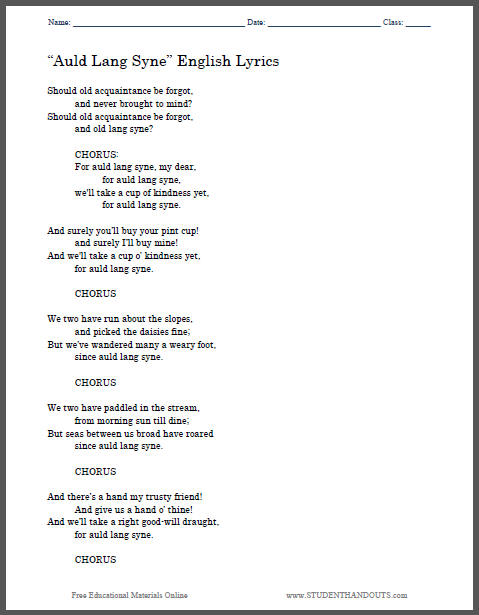Auld Lang Syne Music And Words
Posted By admin On 09.09.19Auld Lang Syne lyrics: all the words so you can sing it on New Year’s Eve. For anyone (most of us) who doesn’t know more than the first two lines. 'Auld Lang Syne' is the song that at the stroke of midnight at the New Year, millions of people around the globe belt out, making it the most widely recognized song on the planet after “Happy.

The ringing in of each new year isn’t complete without “Auld Lang Syne” playing in the background. Number of legs where shear force exceeds max allowed. But what doe the classic song mean and why do we always listen to it before welcoming in Jan. Here is what we know in 2019!The song has a long history. The story goes that in 1788, poet Robert Burns sent the song lyrics to Scots Musical Museum.
Burns wrote that the song was ancient and that he was the first to record its words on paper, according to Scotland.org, part of Scotland is Now campaign’s. The site reports the song title translates to “For Old Times’ Sake,” but others have a different translation.According to, the title means 'times gone by' and “is about remembering friends from the past and not letting them be forgotten.”The lyrics of 'Auld Lang Syne' from Scottish poet Robert Burns are printed on a wall as part of an exhibition at the Morgan Library & Museum in New York on Dec. 'Auld Lang Syne' is the song that at the stroke of midnight at the New Year, millions of people around the globe belt out, making it the most widely recognized song on the planet after “Happy Birthday”. Photo: EMMANUEL DUNAND/AFP/Getty ImagesThe Scottish song is traditionally sung just before midnight on New Year’s Eve. According to Scotland.org, “Everyone stands in a circle holding hands, then at the beginning of the final verse ('And there's a hand my trusty friend') they cross their arms across their bodies so that their left hand is holding the hand of the person on their right, and their right hand holds that of the person on their left. When the song ends, everyone rushes to the middle, still holding hands, and probably giggling.”Though the song is synonymous with New Year’s, it was not intended to be a holiday melody.
Auld Lang Syne Sheet Music
ABC reports it was musician Guy Lombardo who popularized the song in 1929 when his band used it during two radio performances in New York.